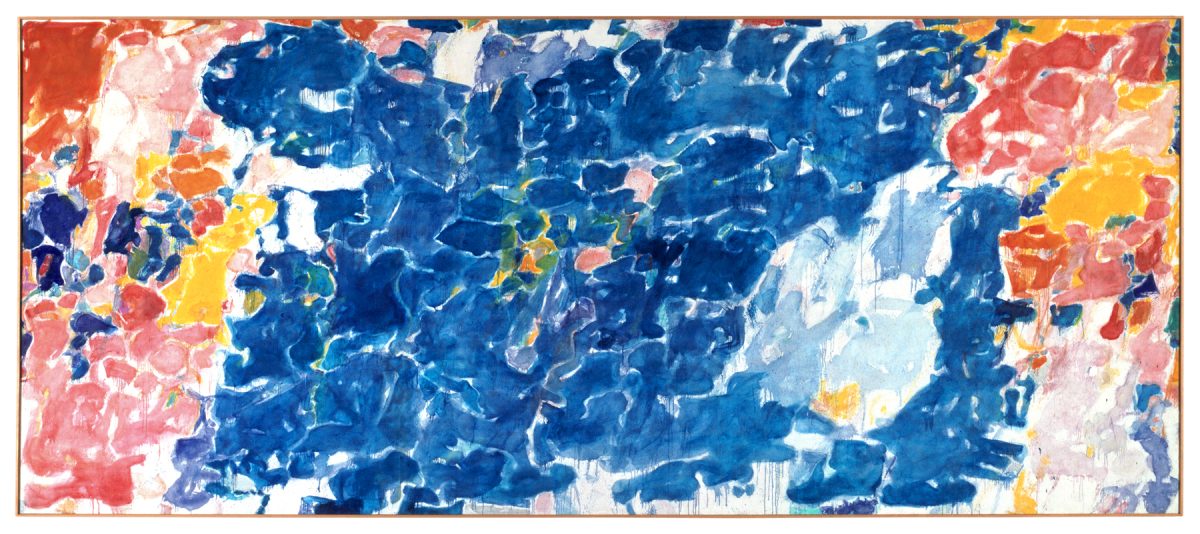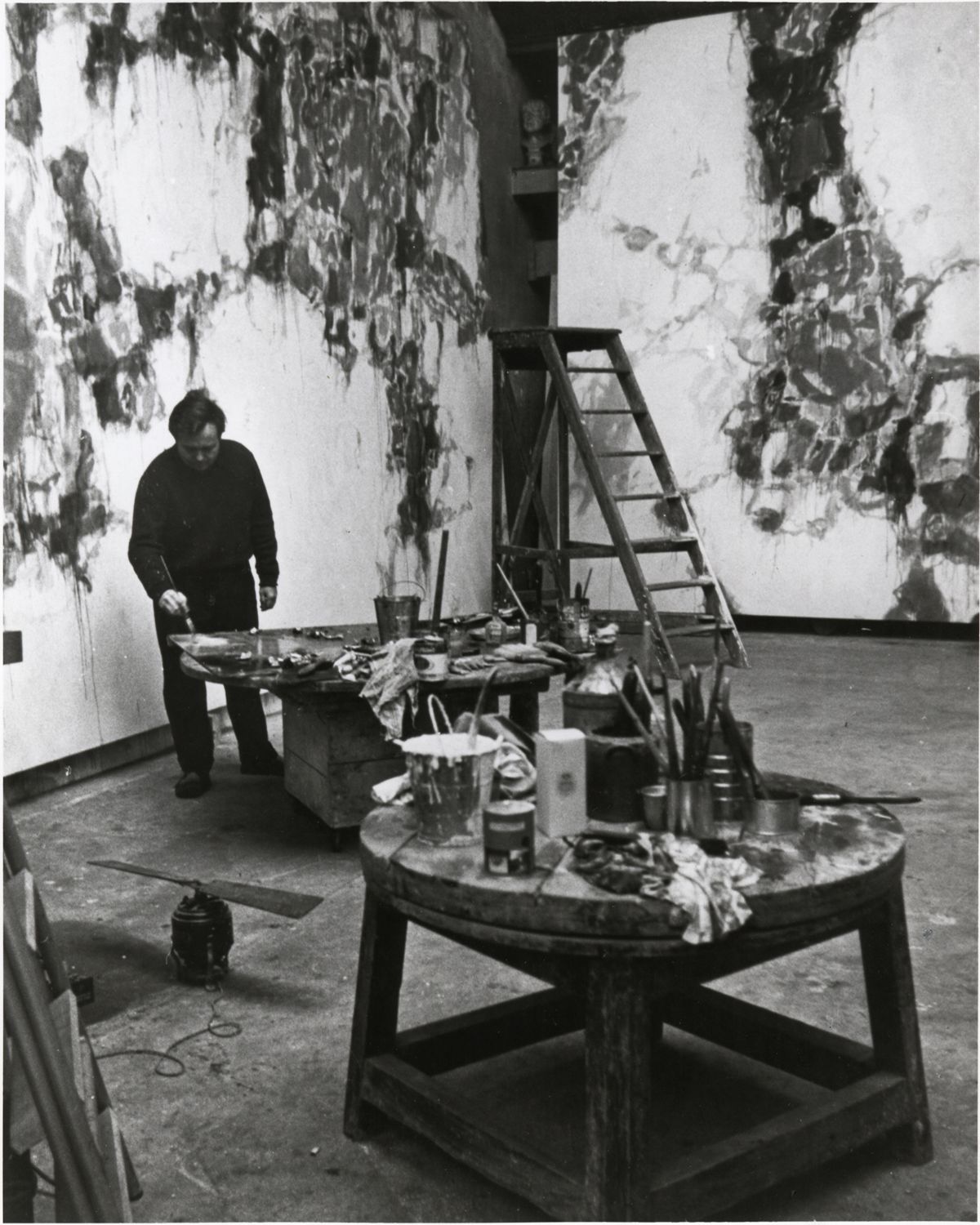

Sam Francis lived a life that was made for biography. Born in 1923 in San Mateo, California, the artist now known for his massive, brightly colored abstract canvases taught himself to paint while he was encased for three years in a full-body cast, the result of an acute case of spinal tuberculosis. Over his 50-year, wildly successful career, Francis made over 10,000 artworks, starred in more than 100 solo exhibitions, and, in the late 1950s to mid-1960s, commanded the highest prices of any living painter. Considered by many to be the world’s first truly international artist, Francis lived across three continents, married five times, and executed creative projects across the globe. In addition to his own prolific art practice, he established a publishing company, printing press, holistic medical research center, reforestation program, and a wind energy company that is still in business today. At his death in 1994, Francis left an estate valued at $79 million.
With such a colorful, fascinating life, it’s a wonder that Gabrielle Selz’s Light on Fire: The Art and Life of Sam Francis (University of California Press) is the artist’s first comprehensive biography. Selz’s engaging book gamely takes readers along for the ride as Francis hops between countries, lovers, and commissions, eternally courting the change and drama that fueled his work. The focus here is both personal and professional: Selz’s father, the curator and art historian Peter Selz, wrote a 1982 monograph on Francis, and Light on Fire picks up that thread. For this book, Selz conducted research at the Sam Francis Foundation archives, but also did revealing interviews with the artist’s widow, ex-wives, children, assistants, friends, dealers, and doctors. In Light on Fire, Selz manages to capture the expansive, unwieldy story of Francis — a vivacious, ego-absorbed searcher — in both his intimate and larger-than-life moments.

It isn’t always easy to empathize with Francis, whose single-minded pursuit of pleasure often overrode the needs of his children and partners. But Selz helps us understand the deeper discord that drove him, including his mother’s early death and the tragic events of April 1, 1936, when the 13-year-old Francis accidentally shot and killed his best friend with a loaded gun at school. Selz’s book traces the long-lasting ramifications of these destabilizing events on Francis in both his spiritual obsessions — later in life, the artist refused traditional medical care for the cancer that would eventually kill him in favor of unsound, new age treatments — and in his attraction to flux and uncertainty. “I like to be a leaf in the life-wind,” Francis wrote in 1961 while hospitalized in Switzerland, where he was battling a second bout of tuberculosis and juggling relationships with his third wife Teruko Yoko and the artist Kiki Kogelnik.
Selz traces Francis’s early artistic influences, like Bonnard, Malevich, and Monet, and she highlights his role as a sort of mentor to Los Angeles artists James Turrell and Ed Ruscha in the 1960s. But the author also excavates the experiences that most impacted Francis’s work, like the wide horizons and seemingly infinite spaces he encountered while he was training to be a pilot with the US Air Force during World War II, and later, watching the moving light on the ceiling of his hospital room while stuck in his cast. “My paintings are a footprint of my whole life,” the artist once said. “Each painting is like my body print, taken at different moments.” Thanks to Selz’s insights, we can read Francis’s abstract works as the deeply personal paintings he intended, knowing something of the complex conflicts that birthed them.





Light on Fire: The Art and Life of Sam Francis by Gabrielle Selz and is published by University of California Press and is available on Bookshop.
0 Commentaires